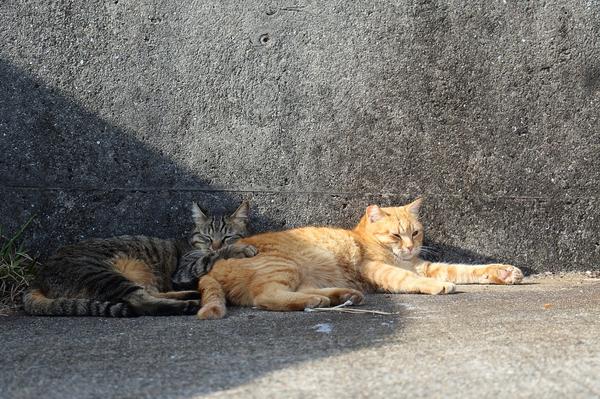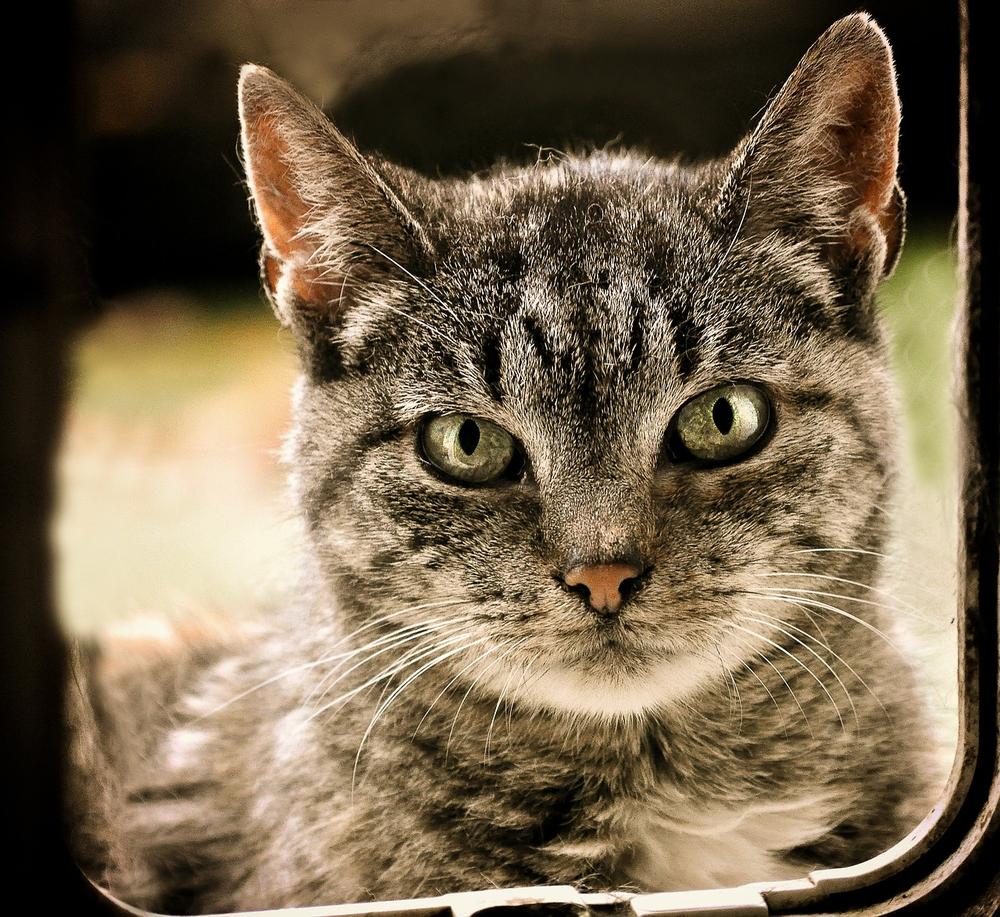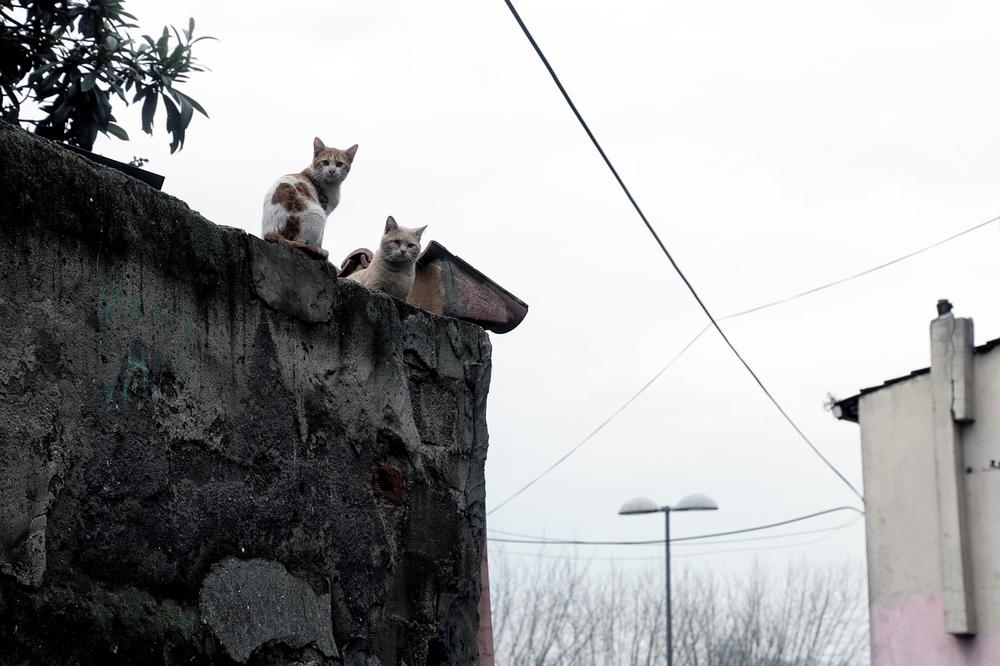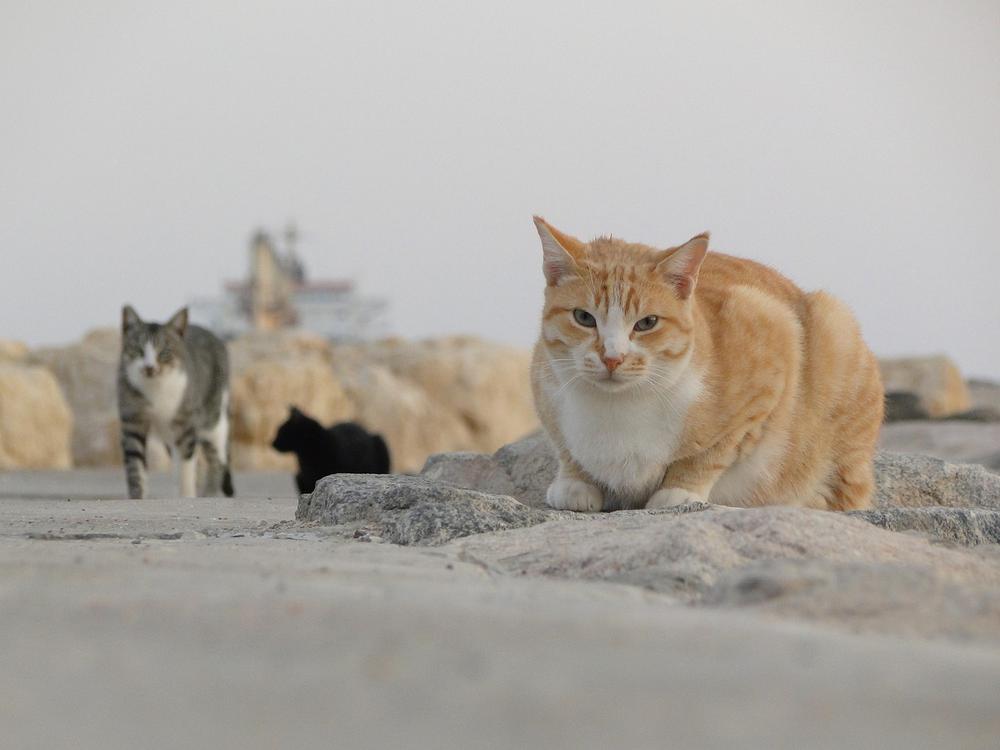How Do Stray Cats Survive Winter? Well, It's Not a Pretty Sight…

Do you ever wonder how stray cats manage to survive winter?
Are you looking for ways to help these brave little souls in the cold weather?
Well, guess what?
You're in the right place.
Because let me tell you, that's a question I've pondered many times myself.
Picture this:
It's frosty outside, and you see a fluffy feline huddled in a corner, trying to stay warm.
It breaks your heart, doesn't it?
But fret not, my friend.
Today, we're diving into the fascinating world of how stray cats brave the winter, and I've got some tips up my sleeve to help you lend a helping hand.
Let's get started!
Preparing for Winter: Understanding Stray Cats' Survival Instincts
Stray cats possess remarkable survival instincts during winter, seeking warm havens and forming alliances with other feline companions. Factors like age, health, and fur density affect their ability to endure the cold. Understanding their strategies helps in preparing and caring for them effectively.
During winter, stray cats are incredibly resilient creatures.
They possess an innate understanding of how to keep warm when the temperature plummets.
In order to survive, these felines seek out snug havens such as car engines or the shelter beneath parked vehicles, where they can bask in warmth.
However, their ability to endure the harsh cold depends on various factors including age, health, weight, fur density, and whether they primarily stay indoors or venture outdoors.
It is truly a delicate balance for them to maintain.
Yet, outdoor cats have remarkably adapted to thrive in various weather conditions throughout winter.

Their survival tactics involve relying on their natural instincts for hunting and scavenging food.
Additionally, forming alliances with other feline companions offers added protection against external elements.
You should note that spaying or neutering outdoor cats during the warmer months can enhance their resilience against winter's chill.
Nonetheless, each individual cat possesses unique capabilities to withstand the cold which are influenced by age, breed, size, and experience.
This means that larger cats with denser coats typically exhibit greater resistance to freezing temperatures – almost like having their own built-in winter jackets!
Nevertheless, once the thermometer falls below 45 degrees Fahrenheit, most stray and feral cats begin feeling the bite of chilly air.
During this time, they actively search for suitable shelters to keep cozy and maintain warmth.
By gaining insight into the survival strategies employed by stray cats during winter, you can effectively prepare and provide better care for these tenacious creatures.
Main points I'll expand upon further down this article:
- Providing consistent food and water greatly impacts stray cats' chances of survival.
- Extra food can help cats conserve energy and stay warm in winter.
- Spaying and neutering enhances cats' overall health and prepares them for winter.
- Kittens and older cats are particularly vulnerable to hypothermia and frostbite.
- Avoid exposing cats to antifreeze, salt, or chemicals that could be harmful.
- Offer well-insulated shelters to give cats a warm and safe place to sleep.
- Building outdoor shelters is a cost-effective way to protect cats from the cold.
- Feeding stations should be well-protected and away from competition and fights.
- Be cautious of cats seeking warmth in car engines and check before driving.
- Support local cat rescue organizations and consider catch-and-release programs.
The Importance of Food and Water for Stray Cats in Winter
To ensure the well-being of stray cats during winter, here are 12 important steps to follow:
- Offer high-calorie foods for warmth.
- Include options like kitten or canned food with dry food.
- Consistent food and water supply is crucial.
- Fresh daily food prevents freezing leftovers.
- Insulate water containers with thick plastic.
- Consider using solar-heated water bowls.
- Additional canned or wet food helps conserve energy.
- Canned food is easier to digest.
- It allows cats to focus more energy on battling the cold.
- Provide sufficient provisions during inclement weather.
- Spaying and neutering enhance overall health.
- Dry food is a practical choice for outdoor cats.
Also, supplement their diet with fresh water and place a bowl on a heated pad to prevent freezing. 😺
You might be wondering what exactly to feed feral cats in winter and how to properly care for them in cold weather.
In my article, I provide expert advice on this important topic.
It's crucial to ensure stray cats have the necessary nutrition and protection during the winter months.
To learn more, I highly recommend checking out What to Feed Feral Cats in Winter.
Start taking proactive steps to help these vulnerable creatures, and find out what strategies can make a significant difference in their well-being.
Signs of Hypothermia in Stray Cats: What to Look For
Cats, much like humans, can suffer from the cold.
You might not realize it, but shivering and lethargy are signs of hypothermia in cats.

A hunched posture, pale gums, and a decreased heart rate could also indicate that your feline friend is feeling the chill. Kittens and older cats are especially vulnerable to hypothermia and frostbite when temperatures drop below 45 degrees Fahrenheit.
In fact, freezing temperatures can be fatal for them.
Stray cats face an even higher risk because they lack the instinct to find warm hiding places.
So, always keep an eye out for these less obvious signs of hypothermia in strays – their well-being depends on it.
Common Health Issues in Stray Cats During Winter
In winter, you must take certain precautions to ensure stray cats are taken care of.
Here are some practical tips for you:
- Give them shelter from the cold weather, like a cardboard box lined with blankets or straw.
- Create warm bedding using materials like cat beds, heated pads, or blankets. Styrofoam can insulate the bottom of the shelter and keep them warm.
- Feed them indoors to protect them from harsh elements. Place their food and water bowls in an enclosed space, like a garage or shed.
- Keep an eye out for injuries or illnesses such as frostbite, hypothermia, or respiratory infections. If something seems wrong, get them to a vet right away.
- Spay/neuter stray cats to prevent too many kittens and help control the population. It also contributes to their overall health.
- Make sure they have fresh water every day, even in the winter. Using heated water bowls can stop it from freezing.
- Be careful of salt exposure, which can irritate their paws. After they've been outside, clean their paws with a damp cloth to remove any harmful substances.
- Spread the word about taking care of stray cats during winter and encourage others to do what they can.
Stray cats can remain safe and in good health during the winter season if you adhere to these suggestions.
Let me break it down for you: Further down the blog post, I'll provide a step-by-step guide on building a DIY outdoor cat shelter. So, keep reading to learn how you can create a warm and safe space for stray cats during winter.
Providing Insulation: Blankets and Bedding for Outdoor Cats
Here are some tips for making sure outdoor cats stay cozy in winter:
- Get self-heating pads made for outdoor use so they can have a comfortable spot to sleep. These pads are better than electric heaters because they save energy.
- Outdoor cats like warm and dry places, especially ones with fur. They often find shelter in vehicles, sheds, trees, and bushes to escape the cold and snow.
- Give them well-insulated shelters that can keep their body heat trapped inside. Use materials like straw or shredded newspaper, but avoid blankets, towels, or hay since these will get wet.
- Make their sleeping spots even cozier and warmer by adding straw for extra insulation.
- Instead of using salt and chemicals for grip on icy surfaces, try animal-friendly deicers, sand, or gravel around the outdoor shelters.
- Think about getting self-heating outdoor shelters and pads to give the cats more options for staying warm during winter.
You have to ensure outdoor cats have somewhere safe and warm to sleep and warm up when it gets colder outside.
Want to know the secret to keeping outdoor cats safe and warm during winter?

Positioning their shelters strategically and providing proper insulation is just the beginning.
But, believe it or not, there's even more you can do to improve their living conditions and increase their chances of survival.
Let's dive in!
Building a DIY Outdoor Cat Shelter: Step-by-Step Guide
Positioning and Design of Outdoor Cat Shelters
When you build an outdoor cat shelter, place it in a quiet area.
This helps the cats feel calm and less disturbed.
Keep your furry friends cozy by protecting them from the cold and wind with shelters, especially in snowy areas.
Build a raised shelter and position the entrance facing a wall for extra protection against winter winds.
Don't forget to add a door flap to keep drafts out and retain warmth inside.
Insulation for a Warm and Cozy Shelter
Here's a pro tip:
Insulation is key.
Use affordable materials like scrap lumber or ones available at building-supply stores.

To max out insulation, consider adding straw and Mylar blankets. These easily available materials make a big difference in keeping the cats warm.
Just like us humans, cats appreciate warmth too!
Alternative Shelter Options and Regular Maintenance
If you don't want to build a shelter from scratch, no problem!
Try using modified dog houses, storage bins, or spacious boxes with narrow entrances as alternative options.
But remember, you need to do regular maintenance.
Clear snow, replace damp or dirty straw, and inspect the shelters regularly to ensure they stay in good condition and provide comfort and protection for our feline friends.
But what about their food and water?
How can you ensure that stray cats have access to nourishment and hydration in the harsh winter months?
Well, I've got some great tips and tricks for creating feeding stations that protect both the sustenance and our precious feline friends.
Let me show you how you can provide warmth, shelter, and delicious meals all in one place!
Creating a Feeding Station for Stray Cats in Cold Weather
You can help stray cats in cold weather by setting up a feeding station. Here's how you can make it even better:
- Lift the stations off the ground to keep the food dry and prevent snow or ice buildup.
- Provide warm shelters by placing two facing each other with a canopy between. This protects the cats, food, and water from the elements.
- Fill the insulated shelters with fresh and tasty dry or moist food. Just make sure to keep it away from the entrance so unwanted guests aren't attracted.
- Place the water bowls outside the shelters to avoid spills and wet conditions. Check them regularly and add warm water if needed to prevent freezing.
- Make the shelters more appealing by adding catnip, silver vine, or treats. This will encourage the cats to use them and create a welcoming environment.
- Pick quiet locations away from foot traffic and loud noises for the feeding stations. This reduces stress and potential conflicts among the cats.
- Keep an eye on the amount of food you provide and adjust as necessary. Clean the feeding station daily to maintain hygiene.
- Prevent ants from disturbing the water by placing dry cat food in a heavy glass bowl inside a larger container filled with water. The cats can enjoy their meal uninterrupted.
Stray cats will receive the necessary support and have a secure and cozy feeding spot in harsh weather conditions when you employ these guidelines.
Your efforts truly make a difference!
Now, you might be wondering how you can have an even greater impact on the well-being of stray cats in cold weather.
Well, let me share with you some additional tips and strategies that will help you make a significant difference in their lives...
The Role of Community in Caring for Stray Cats in Winter
When it comes to caring for stray cats in winter, establishing local networks is crucial.
But what does that mean?
Well, it means working together as a community to coordinate efforts and provide resources for stray cats.
Here are some ways you can get involved:
- Organize shelter-building parties: Get your friends and neighbors together to build shelters for stray cats. These shelters can provide a warm and safe place for cats to seek shelter during the winter months.
- Collaborate with local cat rescue organizations: By working with these organizations, you can help ensure that stray cats receive the care they need. You can volunteer your time, donate supplies, or even foster cats in your home.
- Consider participating in catch-and-release programs: These programs help control the stray cat population by trapping cats, getting them spayed or neutered, and then releasing them back into their environment.
- Support disaster response efforts: During severe weather conditions, cats may be at an increased risk. By donating to organizations that provide disaster response services, you can make a positive impact and help protect cats in need.
Stray cats are vulnerable, especially during the winter months.
By coming together as a community and taking action, we can make a difference in their lives.
So let's lend a helping hand and ensure these cats stay safe and warm!
And that wraps up today's article.
If you wish to read more of my useful articles, I recommend you check out some of these: How Cold Can Cats Survive Outside, Can Cats Get Fleas in the Winter, Can Cats Get Ticks in the Winter, Do Cats Drink Less Water in the Winter, and Do Cats Need Winter Clothing
Talk soon,
-Sarah Davis